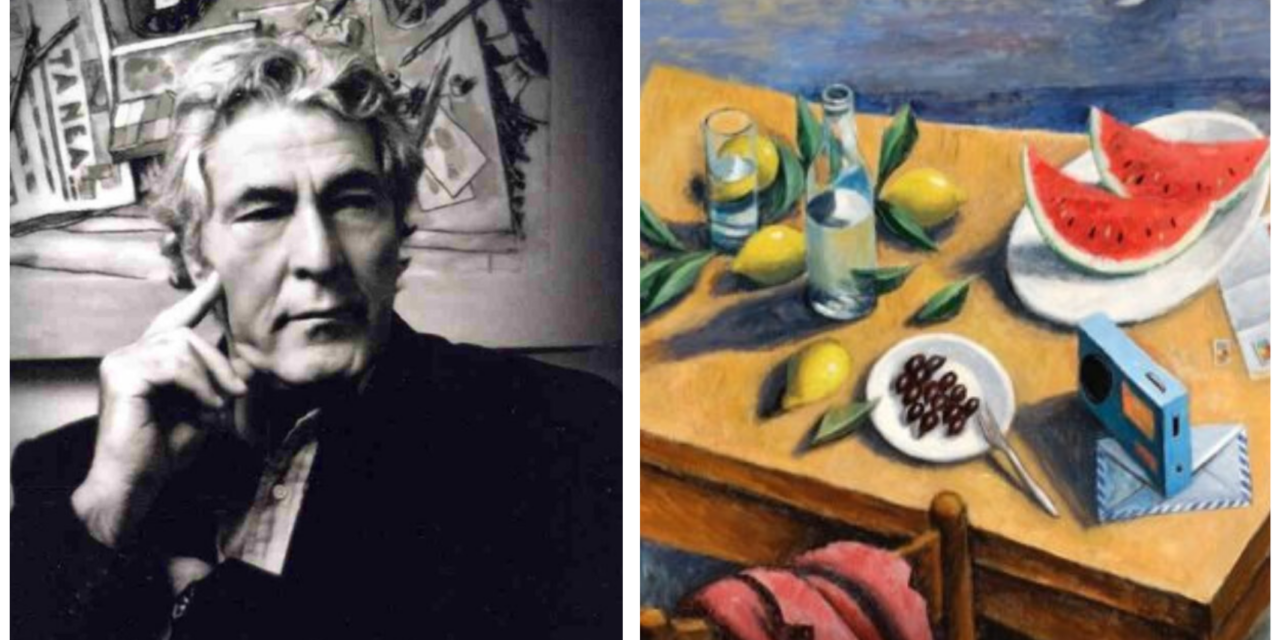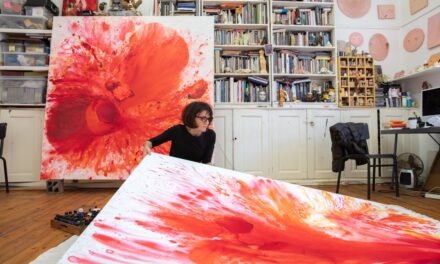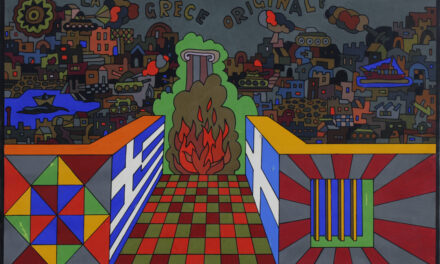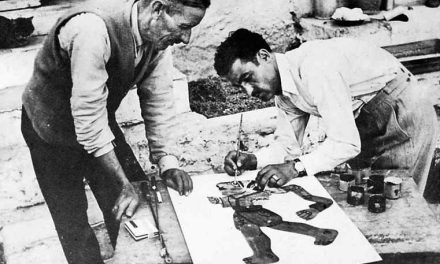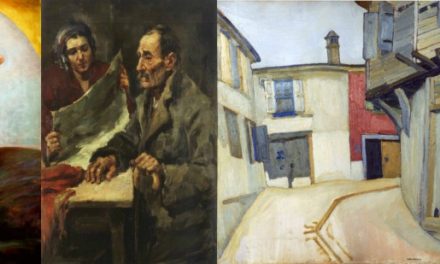Donum Amicorum (Gift of Friends), currently on view at the Byzantine and Christian Museum, is paying tribute to Pavlos Samios, who sadly passed away in 2021 but will always be remembered for his authenticity, instantly recognizable paintings and his love for art and life.
This exhibition features 135 works of art that Pavlos Samios decided to donate to some of the most prominent museums in Greece, such as the National Gallery, Byzantine Museum, the Basil and Elise Goulandris Museum, the Acropolis Museum, the Archaeological Museum of Olympia, the Archaeological Museum of Delphi, the Benaki Museum etc. Meticulously curated by his wife Maria Xanthakou, this body of work will be on display as a whole before these artworks are individually donated to the above-mentioned institutions.
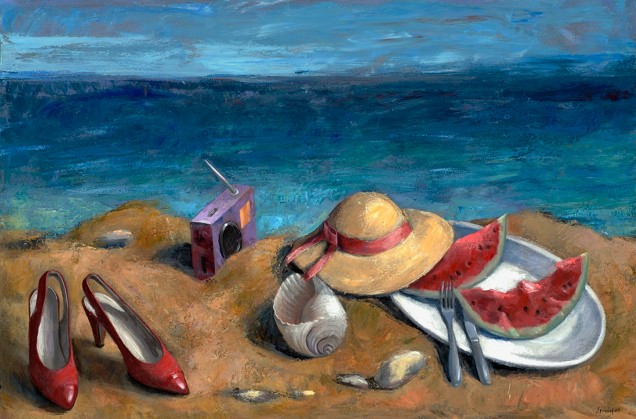
This major contribution exemplifies Samios’ generosity and strong belief that art is meant to be shared. As he said, “I would like to be remembered through my works. I would like those who see them to feel something of what I felt when I was painting”.
Few contemporary Greek painters have blended tradition with contemporary art and realism with surrealism so masterfully. “Everything stems from love in its widest sense” Samios once said. His paintings transcend mere representation. They convey deeper meanings and create stories open to the viewer’s interpretation. As he points out “Painting is an imagination game”. Samios strongly believed that the course of the narrative depicted, the way it evolves and ends, is up to the viewer. The artist should abstain from any explanations and let the viewer take control of the story. After all, he argues, a work of art never ends. That’s why we keep revisiting masterpieces and approach them from a different perspective depending on our emotional state.
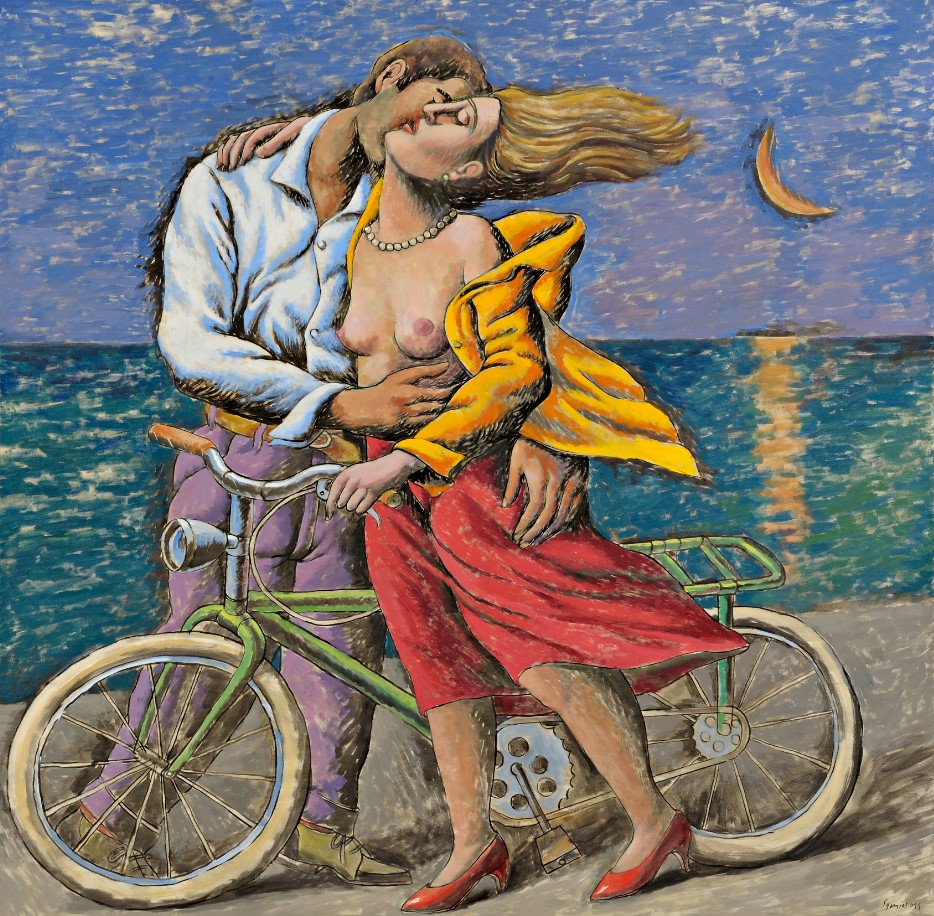
Through his vibrant brushstrokes and rich tapestry of effortless elegance, ancient Greek art and mythological references, byzantine icon painting and cubist elements, Samios invites the viewer to explore the timeless allure and profound depth of the human condition. Personal stories, everyday heroes, couples in love, and lonely women, come together on his canvas creating a nostalgic charm. Departing from a representational approach, he ultimately creates a dreamy universe. His ability to infuse everyday objects with rich symbolism and narrative depth is a testament to his skill as a storyteller through art.
We are drawn to a magical universe, where everyday experience is taken to a metaphysical, spiritual level. In this context, the recurring naked figures are also a testament to his mastery of the human form and a deep appreciation for the female body. Light is also an element that is impossible to go unnoticed in Samios’ art. Following the Byzantine tradition, it is depicted as coming from every direction, creating a captivating visual experience.
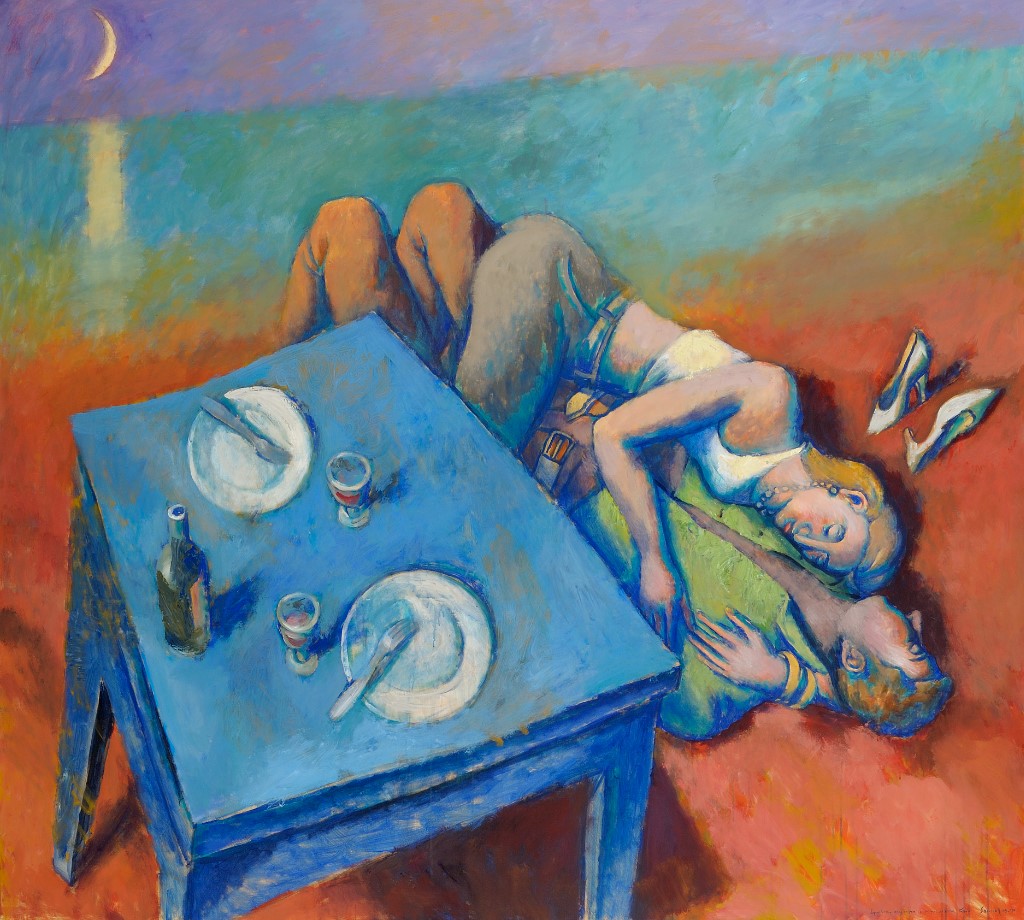
Pavlos Samios was born in Athens in 1948 and passed away in 2021. From a young age he was drawn to drawing, helping his father at his shoe workshop and later on to byzantine icon painting. He studied at the Athens School of Fine Arts under Nikos Nikolaou and Yannis Moralis. While in Paris, where he lived and work from 1978 until 1992, he met Yannis Tsarouchis and Manos Hadjidakis who deeply influence him.
Prima facie, his paintings depict everyday life and everyday objects. Soon, though, we realize that recurring objects, such as women’s shoes, cigarettes, coffee tables, and letters waiting to be opened are not just random inclusions in his compositions, but symbols, serving as motifs that contribute to narratives conveying contemplation, passion and intimacy.
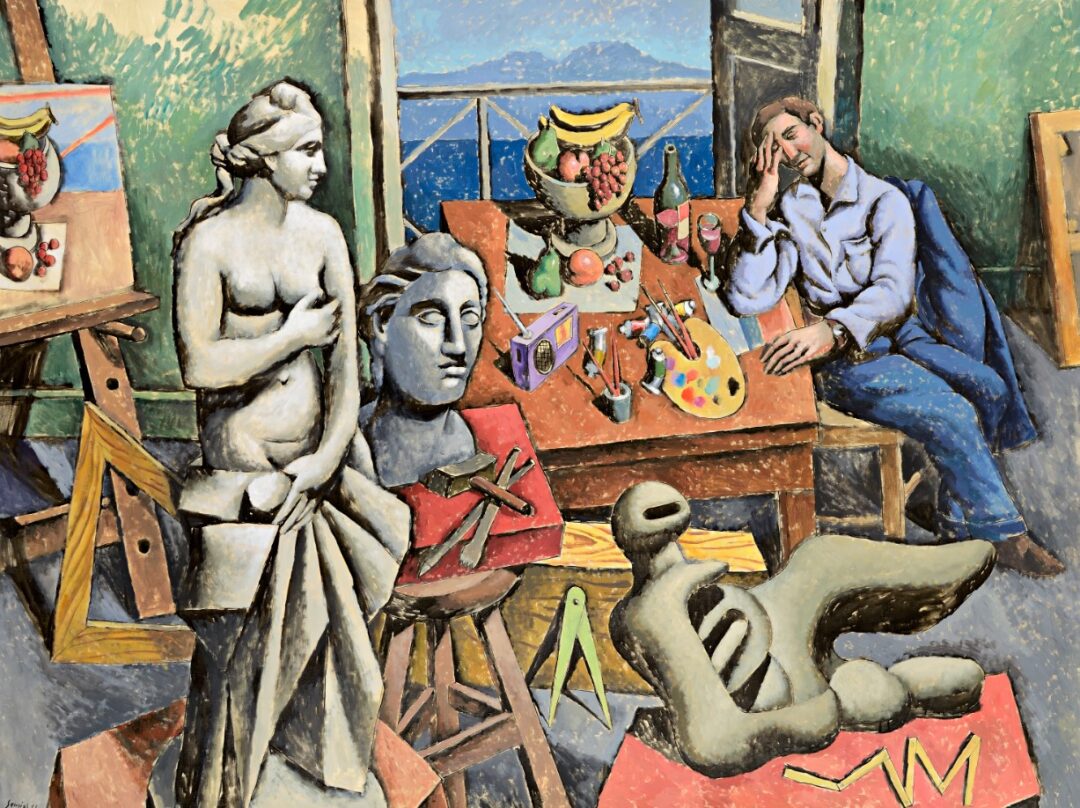
In 2000, he was appointed professor at the Athens School of Fine Arts, where he headed the Byzantine Art and Traditional Techniques Department (Byzantine icons, burnt glass, manuscripts, fresco). Samios has held 79 solo exhibitions and participated in many prestigious group exhibitions in Greece and abroad. His works are found in many museums and private collections. He has also painted many small churches applying he fresco technique.
Maria Xanthakou, Samios’ longtime partner in art and life has significantly contributed to his recognition and success. In her capacity as art curator and Artworx Gallery owner, she played a vital role in the way his art was widely communicated. Sophisticated, unpretentious, eclectic, with an impeccable sense of style and a deep understanding of the art world, Ms Xanthakou, speaks to Greek News Agenda * about his art and legacy.
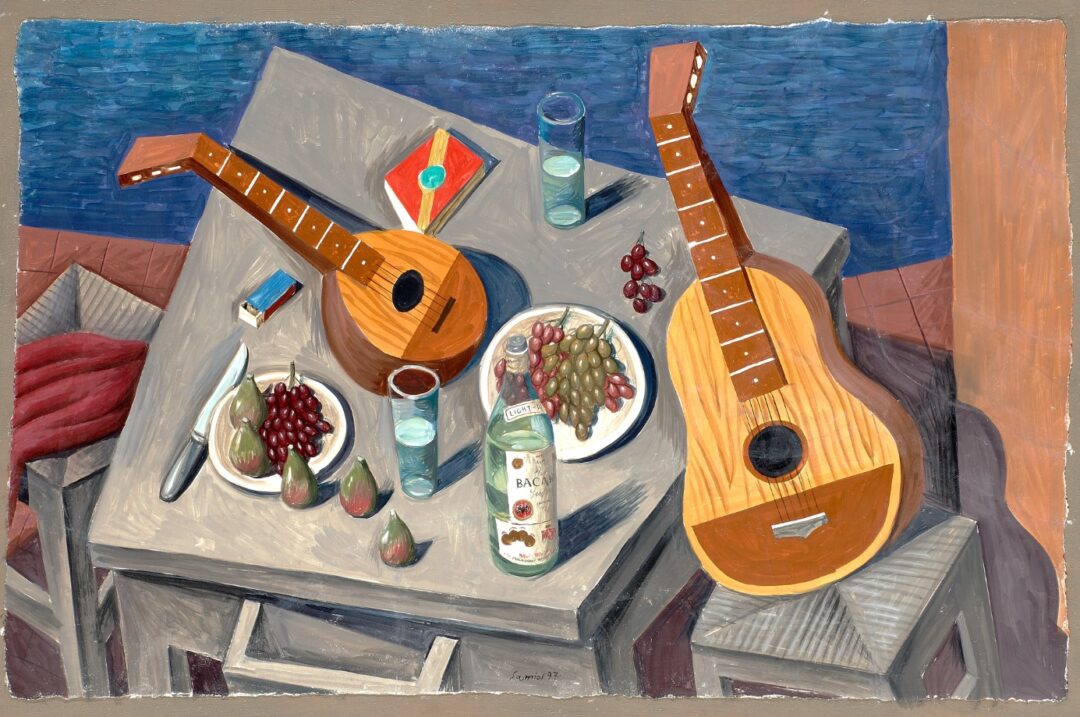
Samios’ art is deeply anthropocentric. In his paintings human presence is always implied in one way or another. It’s obvious he wants to explore human condition. How was this artistic approach related to his life?
From a very young age he was drawn to painting. His father, who was a shoe maker and would often send him to store windows in order to sketch women shoes so he could later design them at his workshop. Even before he started studying at the School of Fine arts, he was already making a living, copying Byzantine icons.
You once said that “first I fell in love with his work and then with him”. I find this very touching.
I’ve always loved painting. I wanted to become a painter. Ultimately though, I got into economics and business. I first discovered Samios as a painter. I admired his work, there was a magic surrealism, a sensitivity in his works that appealed to me. I thought he was in his 70’s. I would never have imagined he was in his 40’s! When we finally met, I was impressed by his extraordinary talent and stood by him for the years that followed.
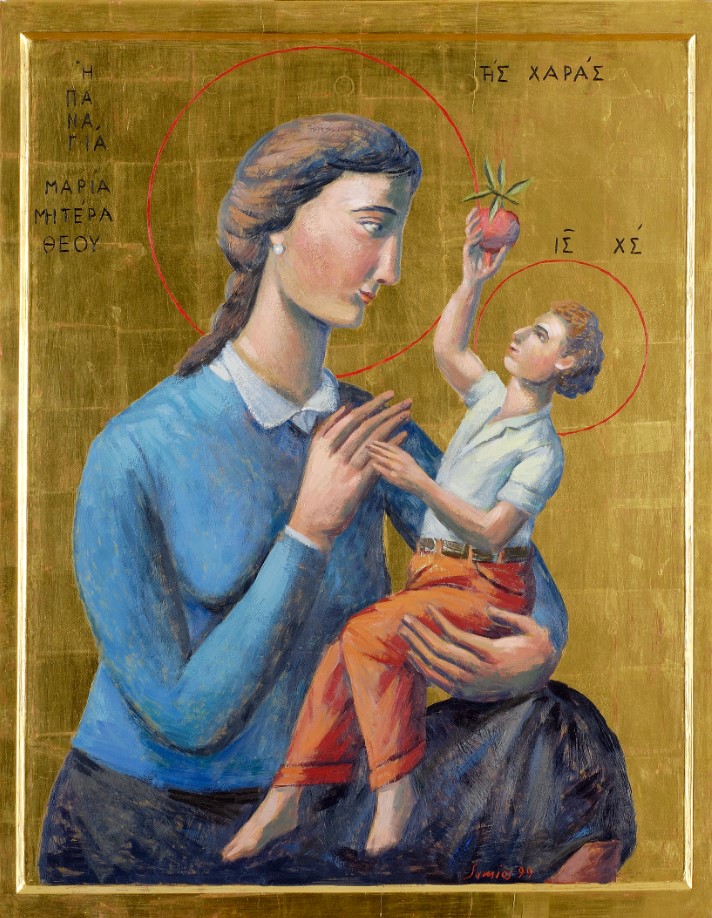
Βeauty is idealized in his work. Every day scenes acquire a metaphysical allure. What was his reaction to beauty?
Samios painted the transcendental aspect of his subject matter, everyday life. Recurring objects were omnipresent in his works, just like punctuation marks in a text. Pumps, cigarettes, wine, coffee tables…All these created a magical atmosphere and that was his way to appeal to the viewer’s senses. He wanted to depict different feelings or circumstances, love, fear, habits, naked bodies, sensitivity, and indifference but always abiding by the beauty of the moment.
Were there any events that defined his career?
At some point, there was a fire in his studio in Paris. Many of his works were destroyed. They depicted his transition from classical painting to slightly more surrealistic images. After that incident, he began painting fire-breathing dragons and human figures in a state of hypnotism.
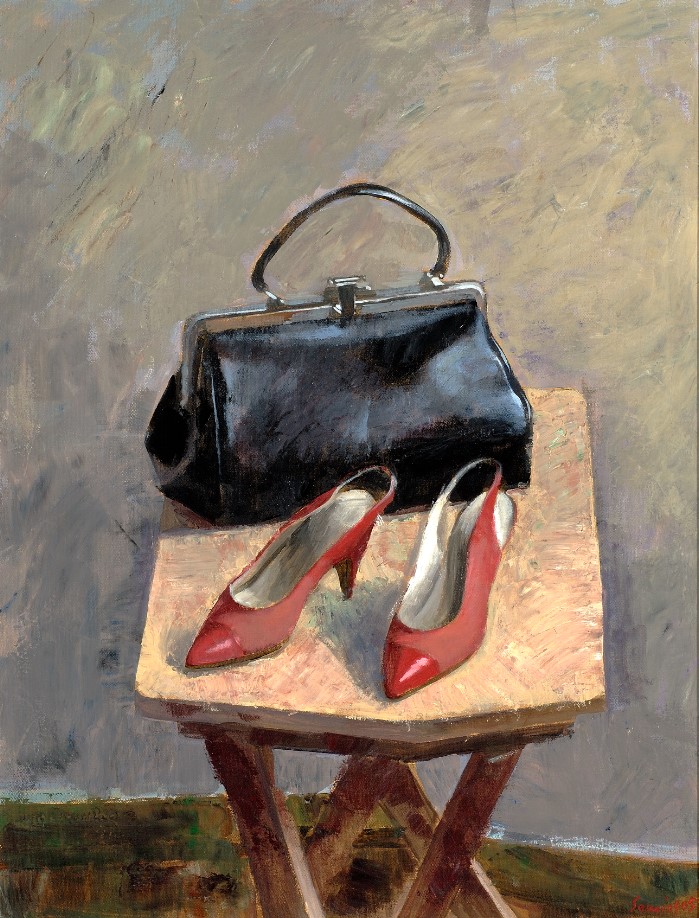
In his own way he dealt with existential concerns in most of his works. What is his relationship to the divine or death?
That’s a hard question. He had many concerns indeed. His relationship with the divine was rather philosophical and respectful. As for death, I don’t know. He may have felt it was haunting him. At some point, he told my daughter, that even if he died at that very moment, he felt he had come full circle. He never told me that… He had other plans.
If I asked you to choose one of his paintings that would work that would remind him to you as you loved him, which one would it be?
That’s another tricky question. I loved many of his works but, at a personal level, I would choose the painter with the easel and the palette, or the painter who sleeps at his artwork table as well as paintings depicting his everyday life.
*Interview by Dora Trogadi
TAGS: ARTS

